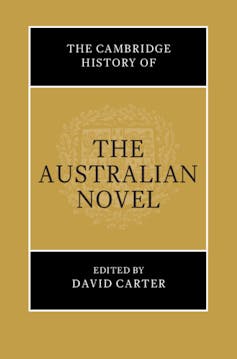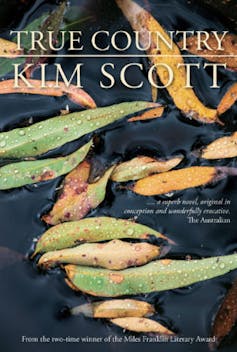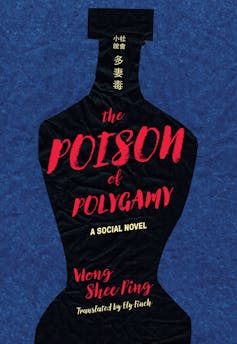“How is The Great Australian Novel going?” asks a character in Thea Astley’s The Well Dressed Explorer, a Miles Franklin Literary Award winner in 1962.
When the weighty Cambridge History of THE AUSTRALIAN NOVEL (as the title reads on its gold cover) landed on my doorstep I wondered if I would find out. Its editor, David Carter, first among equals as scholar-critic of Australian literature, has assembled 39 essays by leaders in the field, himself included, to chart the journey of the Australian version of this shape-shifting form.
Review: The Cambridge History of the Australian Novel – edited by David Carter (Cambridge University Press)
I have read a lot of Australian novels in my time, and written a few. I decided that if I sat down and read the history from cover to cover with open-minded curiosity, I might see what patterns emerged.
Probably no other reader would do this. The chapters on particular topics within a flexible chronology are designed for standalone use by teachers and students. This is a modular and recursive history, in which the past is revisited through a contemporary lens, with an eye on the future. A master narrative is not desired.

The book has the hallmarks of Carter’s status as respected collaborator, mentor and assessor, and a literary critic grounded in the cultural and material contexts of book production. Most of the contributors are academics in literary studies. Their approaches reflect the trends of the academy in recent years.
Often they draw on research funded by the Australian Research Council, and the work shows those preferences too. For Australian literary studies, that means a turn to digital humanities, notably the collection and analysis of data to develop infrastructure of national significance, such as the AustLit and Trove databases.
It means a concern with “print culture” and the wider environment in which literary works are produced and received. It includes “the transnational turn” – how international perspectives complicate national frameworks – as well as a countermanding focus on locatedness, particularly in relation to climate change. And it means paying heed to First Nations voices in work that passes the “national interest” test.
This is a history shaped, or reshaped, by the glorious advent of literary fiction by Australian Indigenous authors, heralded by Kim Scott’s True Country (1993) and flourishing now. As Iva Polak writes from Zagreb in her essay on “Indigenous Futurism”:
Alexis Wright’s Carpentaria (2006) […] as we know, has changed Australia’s literary landscape.
I was reading my way through this book on either side of the Voice referendum and I could sense the hope as the chapters moved towards the present, culminating in Eugenia Flynn’s remarkable essay “A (Sovereign) Body of Work: Australian Indigenous Literary Culture and the Literary Fiction Novel”. Flynn writes:
an established canon of Australian Indigenous literary fiction can now be affirmed […] that speaks out to the rest of the majority non-Indigenous literary sector, disrupting Australian literary hegemony.
As a current development, this poses a challenge to writing its history. The optimistic wave crashed in the world outside the book as I was reading – more like a tsunami – and settler-colonialism reasserted itself with a No.
Time can be a curveball.

An elusive literary beast
The first third of the book takes us from the colonial period to mid-20th-century fiction. At the halfway mark, there is a good-humoured chapter by Paul Sharrad called “From Bunyip to Boom”, which summarises Australian Fiction from 1955 to 1975. Sharrad concludes that the Great Australian Novel (GAN) had by then “become an unstable narrative […] an elusive literary beast”.
Two-thirds of the way through we reach fiction beyond the Mabo decision of 1992, “when the assumptions non-Aboriginal people […] held about their rights to ownership seemed no longer to be watertight”. With Andrew McGahan’s The White Earth (2004), the discussion moves to work published in the 21st century.
The present is folded into a bending chronology that looks back in order to project to what is only just coming. In “Uncertain Futures: Climate Fiction in Australian Literature”, Jessica White adopts the term “future anterior”, a verb tense, as a mode for imagining near-future scenarios of catastrophe and post-catastrophe.
In other chapters, unexpected juxtapositions reveal persistence across time. Brigid Rooney’s “Unsettling Archive: Suburbs in Australian Fiction”, for example, places Fiona McGregor’s Indelible Ink (2010) alongside Jessica Anderson’s The Impersonators (1980) in an overlapping map of Sydney. Paul Giles cites Alexander Harris’s Settlers and Convicts (1847) as an early case of settler unsettlement, while Lynda Ng takes up the same theme in her concluding chapter on J.M. Coetzee, Behrouz Boochani and “the disquiet generated historically” by both Aboriginal people and non-Anglo migrants “in settler Australian culture”.
A tense sense of “future anterior” runs through this collective history, as writers identify trends in the present that may or may not prefigure an alternative potential ahead. In his introduction, Carter refers to “the imagining into being an antipodean world we will also have to name ‘Australia’.”
Canon formation and critique
Carter discusses canon formation and canon critique in his chapter on Australian literary historiography, noting “the ascendancy of academic critics above the men and women of letters dominant” before the 1950s. That situation pertains today. Few of the contributors are creative practitioners or teachers in the cognate discipline of creative writing.
All of the essays are interesting. Some are anxious. Some have flashes of warmth and appreciation, although “great”, as in Great Australian Novel, is pretty much an impossibility. Aesthetic judgements are largely resisted.
A formula emerges, familiar to anyone who has peer-assessed journal articles or research grant applications: fly a theoretical or methodological kite at the start, preferably with an international tail; explore a few carefully chosen case studies as the basis for an argument; conclude briskly with a future-directed uptick. The aim – in key words of approbation – is to “expand” or “recentre” the field.
Carter has argued that Australian literature is as much the creation of Australian readers as it is of Australian writers. Our literature is the totality of the literature we experience, including imports and outside influences, high and low.
It is a powerful idea that I first encountered in the essay “Publishing, Patronage and Cultural Politics”, which Carter contributed to The Cambridge History of Australian Literature edited by the late Peter Pierce in 2009. It manifests here in an interest in all aspects of book production and literary circulation, including sales and accounts.
This history is many-faceted and holistic. In a chapter on publishing, Roger Osborne quotes Carter describing the Australian novel as a “commodity, industry, professional or aesthetic practice, ethical or pedagogical technology, leisure, entertainment, policy object and national space”.
This catch-all conception boils down to a grand definition: the novel in Australia is “a central cultural technology” that “insists on its storytelling power for a wide range of ethical, political and cultural issues, even where written within the bounds of a popular genre form”.
The description recognises the prestige of the novel, whether as bestseller or rarefied prizewinner, while implicitly accepting that everyone has a novel in them and anyone can write one.
Katherine Bode contributes to a chapter on how the meaning of the Australian novel is changed by the information now available in the AustLit database and To be continued: The Australian Newspaper Fiction Database. Her research shows we need “to look beyond the book” to media such as the periodical press that generated novels in episodic, ephemeral form to understand the grassroots development of fiction in 19th-century Australia.
We need to look beyond the cities for literary communities too, as Emily Potter and Brigid Magner argue in their chapter on the “regional novel”: they recognise that “the region as it creatively emerges is a co-production of writer and reader”.
Missing pieces of the puzzle
Yet something like a canon lingers, to judge by the clusters of respectful mentions. After a handful of 19th-century novels, there are Henry Handel Richardson, Christina Stead, Patrick White, Randolph Stow, David Malouf and, soaring above them with nearly double the number of references in the index, the long-time-comer Alexis Wright.
There are omissions, including some of the best novels and novelists in my opinion. But that’s what happens. A puzzling virtual omission is Helen Garner, who has produced a string of successful novels in a career that has been a constant argument with fiction. Is she anathema to the academy? Or can no one find anything interesting to say about Australia’s great precursor of the autofiction that has swept the world?
At the other end of the time frame, Henry Lawson looks like another diminished figure, as Paul Eggert recalibrates the “nationalist myth of the 1890s”. There is not much place for short fiction in this history. Short story writers, from Mena Abdullah to Nam Le, don’t appear.
Among my highlights are Philip Mead on mining trilogies, including The Fortunes of Richard Mahony (1917-29); Nicole Moore’s radical recovery of postwar realism, including Ralph de Boissière’s Crown Jewel (1956), set in Trinidad; the attention Meg Brayshaw pays to M. Barnard Eldershaw’s Tomorrow and Tomorrow and Tomorrow (1947); Elizabeth McMahon on Randolph Stow’s To the Islands (1958); Brigid Rooney’s spotting of the “purple theme” of “the little sarsaparilla vine” that emerges “from the darker undertones” in Patrick White’s The Tree of Man (1955); and Jessica White on Dyschronia (2018) by Jennifer Mills.
Read more: The case for The Fortunes of Richard Mahony by Henry Handel Richardson

Emmett Stinson does a compare-and-contrast of David Malouf and Gerald Murnane, finding that “Malouf’s success is in no small part linked to the way in which educational institutions have assigned his works over the years”. And in “The Novel Road to the Global South”, Sascha Morrell takes a scalpel to celebrated works by Peter Carey and Richard Flanagan to diagnose an Australian condition: “a peculiar, backward-looking nostalgia for Australia’s accustomed ‘underdog’ status”.
Elsewhere the issue of “inherent racism” is noted in passing in Australia’s bestselling invasion narrative for Young Adults, John Marsden’s Tomorrow series (1993-99).
Multilingual writing?
Emily Yu Zong writes in “The Making of the Asian Australian Novel” that the recent translation into English of Wong Shee Ping’s The Poison of Polygamy – a novel serialised in Melbourne’s Chinese Times from 1909 – “has unveiled the earliest Chinese Australian novel and a neglected multilingual lineage of Australian literature”.

The question of translation comes up in discussion of Legendary Tales of the Australian Aborigines (1930) by Ngarrindjeri man David Unaipon, in Jumana Bayeh’s consideration of diasporic writing in “The Arab Australian Novel”, and in relation to Behrouz Boochani’s hybrid work No Friend but the Mountains, originally written in Farsi.
Otherwise fiction in languages other than English barely breaks the surface. That limitation occludes Iwaki Kei’s remarkable novel Farewell, My Orange (2013) about African migrants to country Australia, which has been translated from Japanese by Meredith McKinney. Multilingual writing seems to be one part of the “future anterior” that we are not quite ready for.
Literary history can take many forms. I missed the most basic of those: biography. While writers are identity-checked where possible (“Christos Tsiolkas, a second-generation gay Greek Australian man”), few contributors are interested in explaining a writer’s career path.
Top marks then to Beth Driscoll and Kim Wilkins, whose chapter on fantasy, crime and romance fiction provides empirical information on how such stars as Kerry Greenwood and Peter Temple did what they did, and names those, including agents, editors and publishers, who were part of the process. They shout out to the short story as crucial to the networks that underpin the success of Australian fantasy. Fiction is also a form of sociability.
What are novels for? One answer would be that they are for academics to find interest in and make researchable and teachable. They are a means to an important end: part of how “contemporary Australian culture is valued and assessed”, in the words of Imelda Whelehan and Claire McCarthy in a chapter on screen adaptations. David Carter and his team have done a great job of showing how it’s done.
Nicholas Jose has previously received funding from the Australian Research Council.
This article was originally published on The Conversation. Read the original article.






